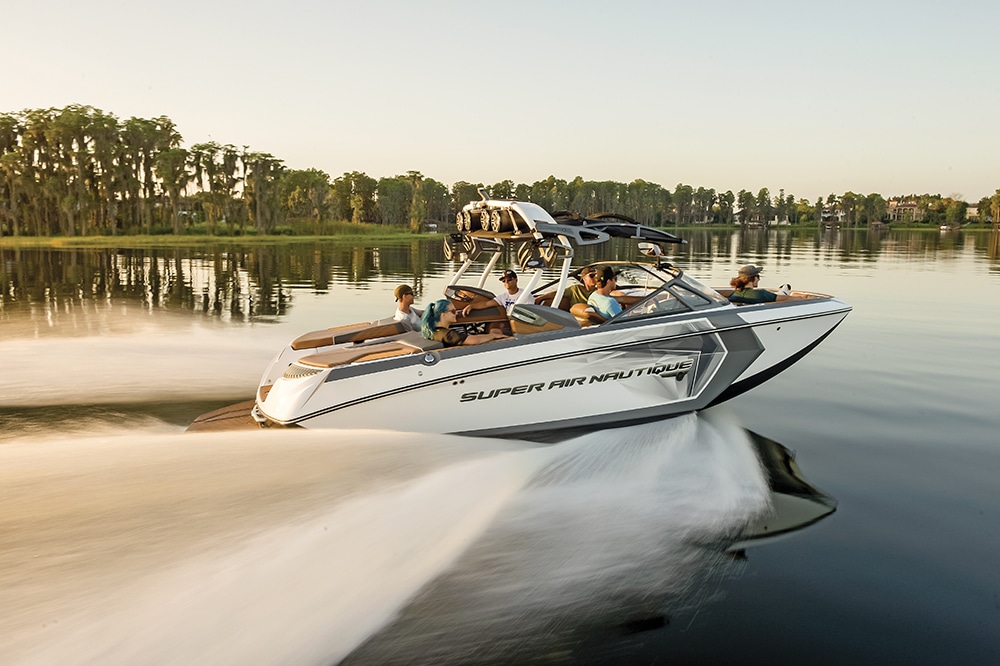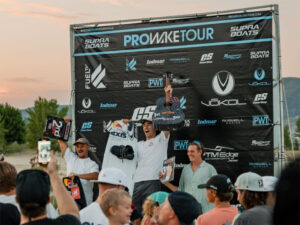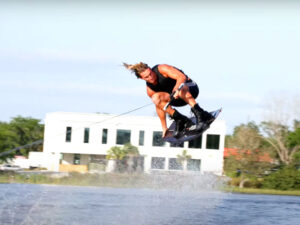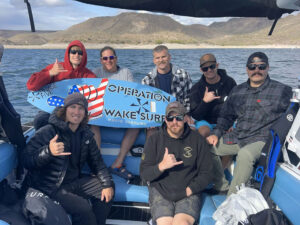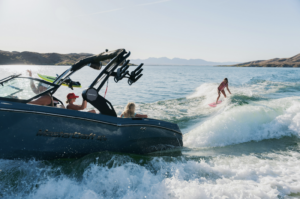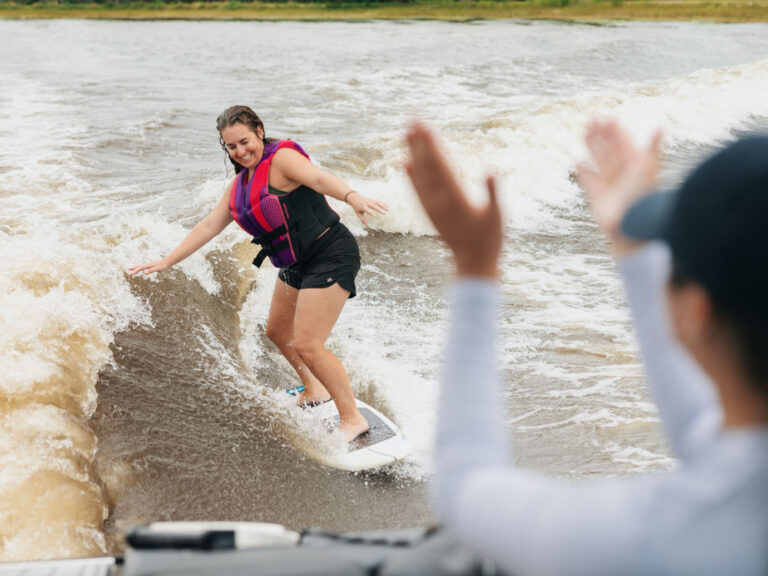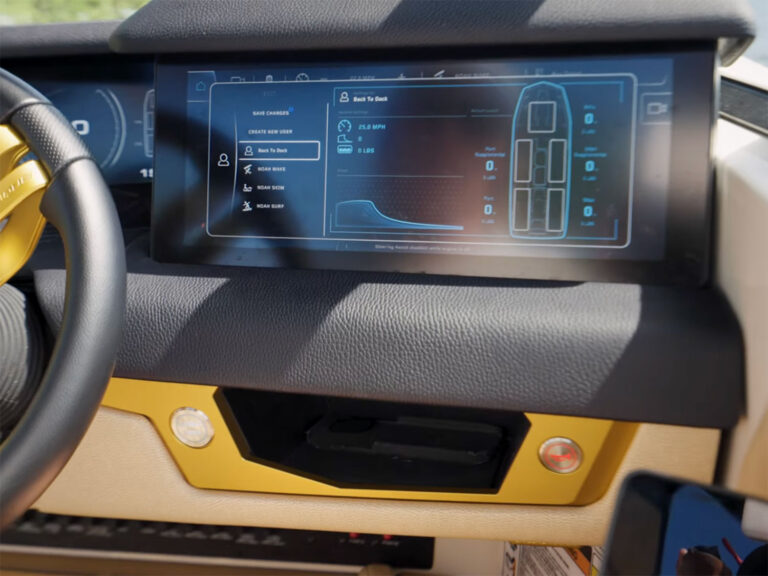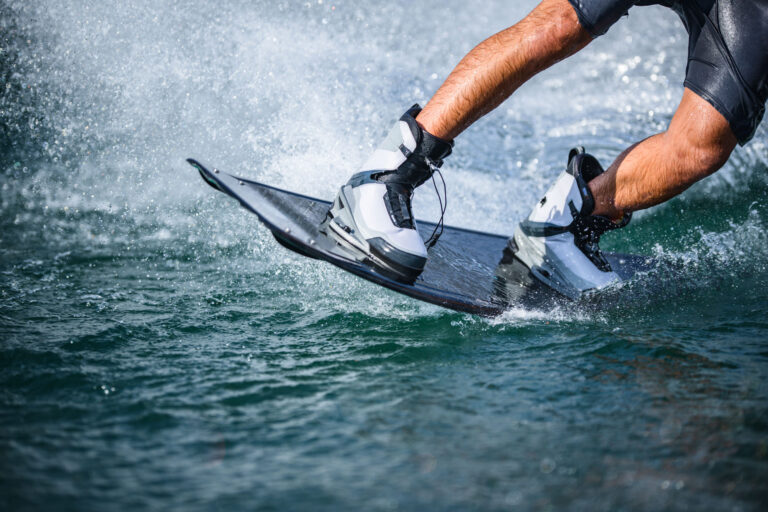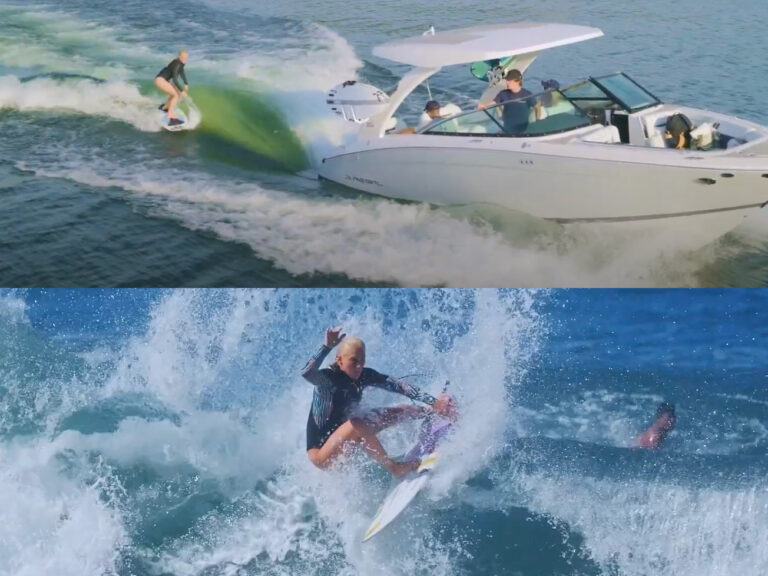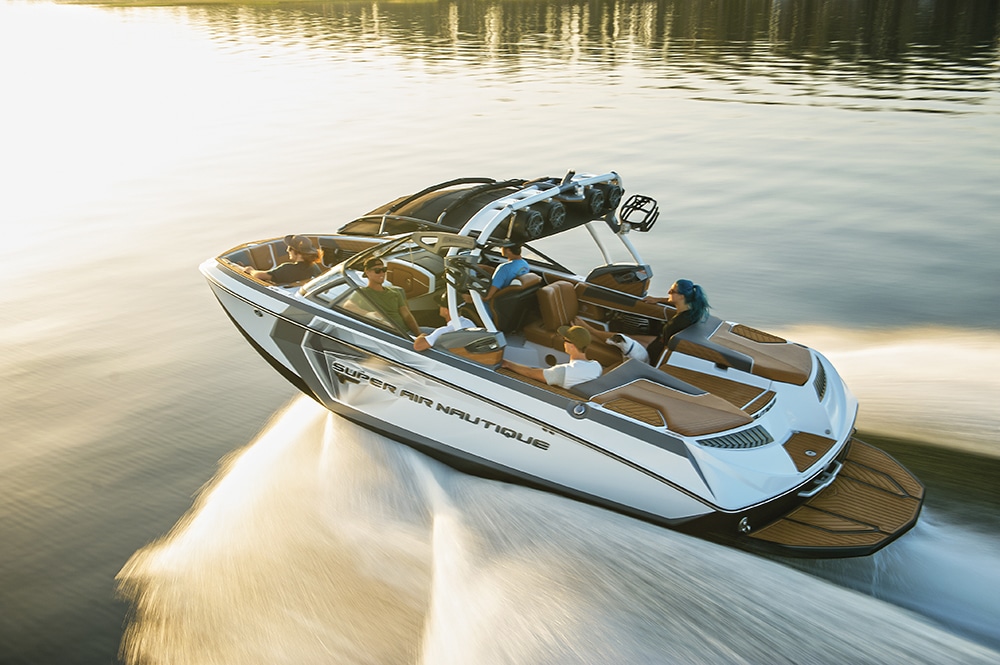
Take a look:
The Nautique NCRS
It’s easy to overlook the Nautique Configurable Running Surface (NCRS). After all, its set-it-and-forget-it design is intended to enhance your on-water experience without the driver having to worry about it. Despite being so inconspicuous, however, the NCRS could stake a fair claim as one of the most important wakeboarding innovations in recent memory. Sound like a bit of a stretch? Well, first consider the impact the G23 and the rest of Nautique’s G series has had on wakeboarding progression over the past five years. Now consider the fact that the engineers behind the G23 say its celebrated performance wouldn’t be possible without NCRS.
The most obvious comparison is a trim tab. After all, NCRS is fundamentally a plate that moves up and down. Unlike a traditional trim tab, however, NCRS is actually part of the running surface rather than an add-on component.
AdvertisementLike the traction control in your car, NCRS automatically makes adjustments based on user settings — how much help you want out of the hole, dialing in the shape of your wake — and dynamic conditions in the boat, such as load.
Sensors relay conditional data to the LINC system, which determines how far the plate needs to be deployed based on user settings, optimizing the running surface under any condition for every application in real time.
NCRS was inspired in part by movable surfaces on aircrafts. In fact, Bill Snook, director of design and development, relates NCRS’ automated function to that of military aircraft, in which pilots aren’t responsible for the control of many movable surfaces.
Advertisement
